 Winter often brings challenges like colder, shorter days and packed holiday schedules, making it tempting to skip workouts. But staying motivated is possible with a few adjustments! Here are some effective strategies to help you stay on track and feel your best throughout the winter months.
Winter often brings challenges like colder, shorter days and packed holiday schedules, making it tempting to skip workouts. But staying motivated is possible with a few adjustments! Here are some effective strategies to help you stay on track and feel your best throughout the winter months.
Tip #1 Less Time, More Effort
When time is tight, go for workouts that pack a punch. High-Intensity Interval Training (HIIT) is an excellent choice, alternating bursts of intense activity with short recovery periods. A 20-minute session can deliver the same benefits as an hour of moderate exercise, making it perfect for busy days.
Examples of HIIT Workouts
- At Home: Circuits with burpees, mountain climbers, or squats.
- In the Gym: Alternate treadmill sprints with rest periods.
- Outdoors: Hill sprints or even a snowball fight to burn calories and have fun!
Tip #2 Schedule Your Exercise
Consistency starts with planning. Treat your workouts like appointments—add them to your calendar and make fitness a priority.
Ways to Fit Exercise Into Your Day
- Mornings: Energize your day with an early workout.
- Lunch Breaks: Take a brisk walk or hit the gym.
- Evenings: Relax with yoga or gentle stretching.
Remember, what gets scheduled gets done!
Tip #3. Make Fitness Social
Combine movement with social or family time. Winter is the perfect season to turn gatherings into active events.
Ideas for Active Social Plans
- Winter Sports: Go ice skating, skiing, or snowboarding.
- Outdoor Adventures: Try sledding or snowshoeing with friends.
- Indoor Fun: Dance parties or trampoline parks keep things lively.
Even a family walk after dinner can keep everyone moving and connected.
Extra Tips for Winter Motivation
- Dress for the Weather: Wear warm, moisture-wicking layers for outdoor workouts.
- Stay Indoors When Needed: Explore at-home fitness apps or virtual classes.
- Set a Goal: Train for a spring event or work on mastering a new skill.
- Reward Yourself: Celebrate milestones with new workout gear or a cozy spa day.
Winter might make fitness a little trickier, but it also opens up opportunities to try new activities and rethink your routine. With these tips, you’ll stay motivated and reap the rewards of staying active all season long.
Looking for more help to stay motivated this season? Our certified personal trainers are here to help you every step of the way. Book a consultation today and take the first step toward your fitness transformation!


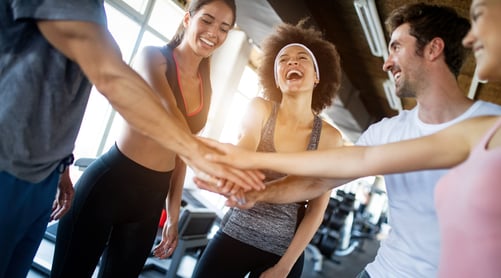

 If you’re like me and absolutely love listening to music and discovering new artists, genres, etc., then I could bet that you most likely listen to music while you exercise. Combining music and workouts has become a common practice among fitness enthusiasts because it can provide a boost of motivation and energy for when you’re testing your one-rep max or just taking a brisk walk outdoors. However, in this blog I will discuss the potential drawbacks of listening to music during a workout/training session and, hopefully, it will make you think about how music (or no music) plays a role in your training.
If you’re like me and absolutely love listening to music and discovering new artists, genres, etc., then I could bet that you most likely listen to music while you exercise. Combining music and workouts has become a common practice among fitness enthusiasts because it can provide a boost of motivation and energy for when you’re testing your one-rep max or just taking a brisk walk outdoors. However, in this blog I will discuss the potential drawbacks of listening to music during a workout/training session and, hopefully, it will make you think about how music (or no music) plays a role in your training.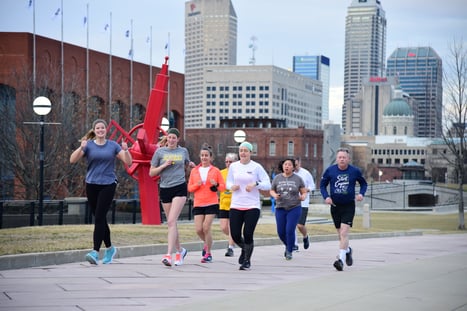 Running with others is one of the most effective strategies for creating a running habit and continuing it. The social benefits of running are among the biggest reasons why runners start and stick with running. Whether you’re running with one friend or a running group, here are some ways you can benefit from group running.
Running with others is one of the most effective strategies for creating a running habit and continuing it. The social benefits of running are among the biggest reasons why runners start and stick with running. Whether you’re running with one friend or a running group, here are some ways you can benefit from group running. Let’s be real. We aren’t always motivated to work out, and sometimes it’s hard to find that motivation. It’s even harder to find motivation when you don’t even enjoy exercise. It’s important to learn why getting active is so important, and it all starts with changing your mindset about it.
Let’s be real. We aren’t always motivated to work out, and sometimes it’s hard to find that motivation. It’s even harder to find motivation when you don’t even enjoy exercise. It’s important to learn why getting active is so important, and it all starts with changing your mindset about it.  With the holidays coming up, it can be easy to get caught up in the busyness of it all. From Thanksgiving to Christmas, we are bombarded with festive meals, holiday parties, sweet treats, and family gatherings that simply interrupt our normal routine. The holiday season is one of the most difficult times to stay motivated to be healthy. Not to mention the fact that it is several degrees cooler and I would rather hibernate than go out to the gym. Plus, many of us travel to visit family and friends and we are just not close to our gym.
With the holidays coming up, it can be easy to get caught up in the busyness of it all. From Thanksgiving to Christmas, we are bombarded with festive meals, holiday parties, sweet treats, and family gatherings that simply interrupt our normal routine. The holiday season is one of the most difficult times to stay motivated to be healthy. Not to mention the fact that it is several degrees cooler and I would rather hibernate than go out to the gym. Plus, many of us travel to visit family and friends and we are just not close to our gym. 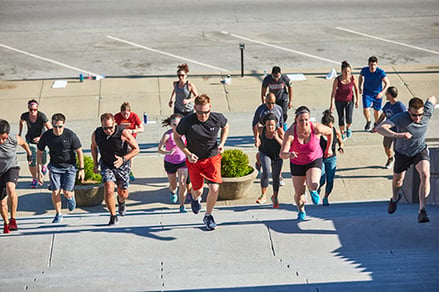 Group fitness classes are fitting for many people because the classes provide participants with predetermined workouts led by highly motivated instructors in a group setting. The niche of group fitness is constantly evolving. Classes in the category of group fitness look a lot different than they did 10 or 20 years ago. Not only do the classes look different, but they are more diverse than ever. Many participants use group fitness as supplementation for a typical workout at the gym because all you have to do is show up. Ease of participation coupled with the accountability of other members makes group fitness classes a unique environment.
Group fitness classes are fitting for many people because the classes provide participants with predetermined workouts led by highly motivated instructors in a group setting. The niche of group fitness is constantly evolving. Classes in the category of group fitness look a lot different than they did 10 or 20 years ago. Not only do the classes look different, but they are more diverse than ever. Many participants use group fitness as supplementation for a typical workout at the gym because all you have to do is show up. Ease of participation coupled with the accountability of other members makes group fitness classes a unique environment.

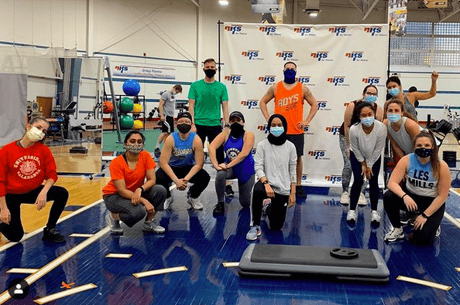 Group fitness
Group fitness
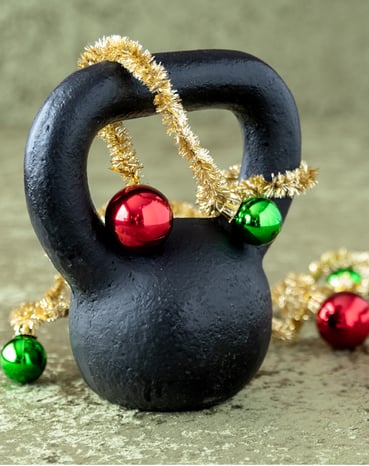 I don’t know about you, but often during the holidays it just seems easy to blow off your daily workout. You have done well up to this point, staying committed and getting yourself into the gym or out for a run. But with the dark evenings, busy work schedule, and possibly some travel, it tends to be the first thing to take off the list. It’s important for your body to take a break, but if you need some tips on how to keep yourself going, keep reading!
I don’t know about you, but often during the holidays it just seems easy to blow off your daily workout. You have done well up to this point, staying committed and getting yourself into the gym or out for a run. But with the dark evenings, busy work schedule, and possibly some travel, it tends to be the first thing to take off the list. It’s important for your body to take a break, but if you need some tips on how to keep yourself going, keep reading! If your looking for a new challenge in the new year consider registering for the
If your looking for a new challenge in the new year consider registering for the 